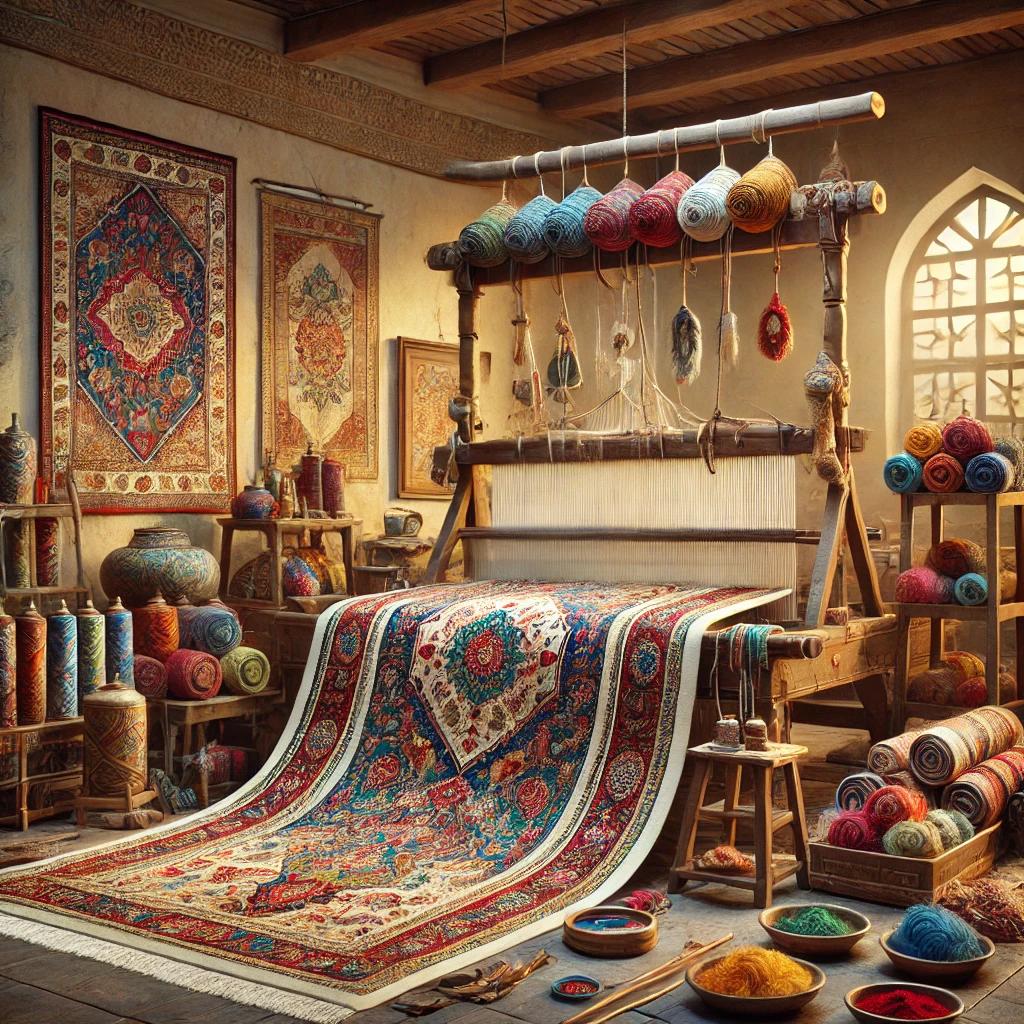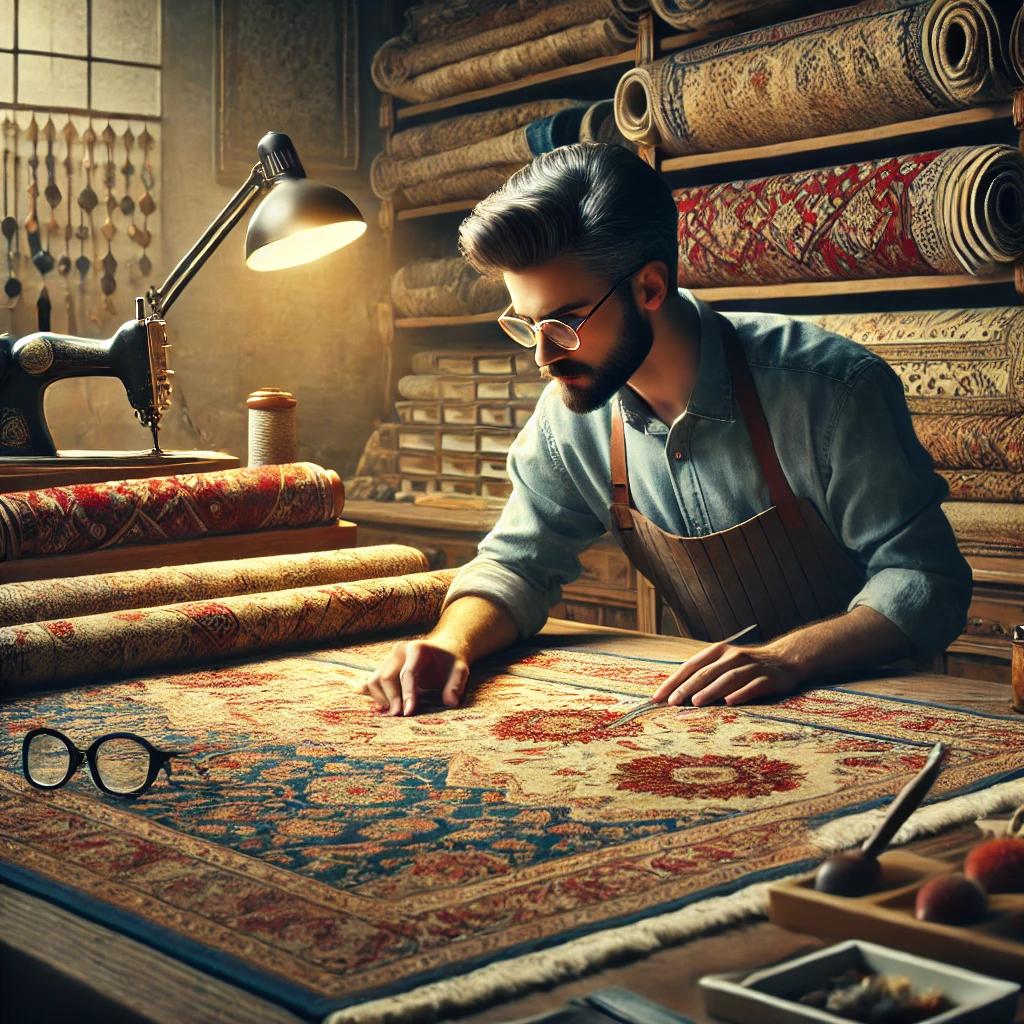
The Ultimate Persian Rug Buying Guide
Estimated reading time: 8 minutes
Key Takeaways
- Persian rugs are hand-knotted works of art, traditionally made in Iran, known for their timeless beauty and craftsmanship.
- Key markers of quality include the type of fiber, dyes used, knot density (KPSI), and finishing details.
- Regional styles vary, from intricately woven city/workshop rugs to bold, geometric tribal designs.
- Examining the back of the rug can reveal authenticity; genuine rugs show unique handcrafting details.
- Proper care and storage can significantly extend a rug’s life and maintain its value.
Table of contents
Understanding Persian Rugs
Welcome to your comprehensive Persian rug buying guide! Here, we delve deep into the intricacies of Persian rugs, helping you understand and evaluate their authenticity, quality, value, and proper care. Persian rugs, known for their beauty and craftsmanship, vary significantly by region, material, weave, and age. By the end of this guide, you will be equipped to make informed decisions, avoiding costly mistakes, and selecting a rug that best fits your style and budget.
Definition & Characteristics
Persian rugs are hand-knotted artistic creations traditionally made in Iran. These rugs are crafted using natural fibers such as wool, cotton provides a stable foundation, and silk, which contribute to their durability and luxurious feel. Key quality markers to consider include:
- Fiber Types: Wool is celebrated for its durability and warmth, cotton for stability, and silk for a lustrous touch.
- Dyes: Look for natural dyes which offer a rich palette that ages beautifully, unlike synthetic dyes that can fade unevenly.
- Knot Density: Known as KPSI (knots per square inch), this measurement helps gauge the rug’s fineness, though it’s not the sole indicator of quality.
- Finishing Details: The craftsmanship in the finishing touches often tells much about a rug’s overall quality.
Regional Styles
- City/Workshop Rugs: Notable cities like Tabriz, Isfahan, Nain, and Qum produce rugs with intricate designs and often use silk or fine wool. These are typically high in KPSI.
- Tribal/Nomadic Rugs: Including Qashqai and Kurdish, these rugs feature bold geometric motifs with coarser weaves, reflecting a rich cultural heritage.
- Village Rugs: From regions like Kashan and Heriz, these rugs vary in weave density and patterns, often featuring classic medallions.
Craftsmanship in these rugs is evident in the types of knots used—either asymmetric (Persian/Senneh) or symmetric (Turkish/Ghiordes). These contribute significantly to the design clarity and overall aesthetic of the rug. More details on the importance of craftsmanship and KPSI can be found here.
Evaluating the Back of a Persian Rug
Why the Back Matters
The back of a Persian rug provides critical clues about its authenticity. A genuine hand-knotted rug shows clear knotting and slight irregularities that indicate handcrafting, as opposed to the uniform backing of machine-made rugs.
What to Look For
- Knot Uniformity: Hand-knotted rugs exhibit unique knot structures; even slight irregularities hint at authentic handcrafting.
- Material Use: Foundations matter; cotton and silk are commonly used. Check for any signs of dye bleed which can indicate the type of dyes used.
- Fringe Attachments: Genuine rugs often have fringes that are an extension of the rug’s foundation, not sewn on after the fact.
For more on confirming authenticity and understanding the importance of the rug’s backing, visit this link.
Assessing Rug Age
Determining the Rug Age
Age can be a significant factor in the value of Persian rugs. Antique rugs (over 100 years old) can command high prices if they are well-preserved. Key indicators of age include:
- Material Patina: Look for a glow in older wools and darkening in cotton foundations.
- Dye Types: Natural dyes offer subtle variability called abrash, as opposed to the uniformity of synthetic dyes.
Impact of Age on Value & Quality
The allure of vintage rugs lies in their unique attributes and historical significance, which often justify their premium pricing. Learn more about the correlation between age, pricing, and quality here.
Top Persian Rugs
Overview of Popular Styles
From the fine, intricate patterns of Tabriz and the floral beauty of Isfahan to the bold, geometric designs of tribal Qashqai rugs, Persian rugs offer a style for every taste. Understanding the characteristics that define these styles can help you choose a rug that meets your aesthetic and functional expectations.
Unique Features
Each style and region brings its distinct flavor—color palettes, motif arrangements (like medallions or floral repeats), and weaving techniques—making each rug a unique piece of art. For more on selecting top Persian rugs to match your taste and budget, see this resource.
Finding the Best Deals: Discount Rug Outlet
Benefits of Buying from a Discount Rug Outlet
Discount outlets often offer access to high-quality rugs at reduced prices, including overstock items, estate collections, and closeouts. However, ensure you’re dealing with reputable sellers who provide comprehensive information about their rugs. Tips on identifying reputable outlets and ensuring value for money are detailed here.
Storing Wool Rugs Properly
Importance of Proper Storage
Proper storage is crucial to maintaining the beauty and integrity of Persian rugs. Avoid plastic wraps and damp environments, opting instead for cool, dry places. For a detailed guide on proper rug storage and common mistakes to avoid, check out this link.
Comprehensive Persian Rug Guide Recap
Key Takeaways
This guide has walked you through the essentials of choosing, evaluating, and caring for Persian rugs, from understanding craftsmanship and materials to assessing age and storing your rugs properly. Remember, a well-chosen Persian rug is not just decor but an investment that can greatly enhance your space. For further reading and detailed listings, consult certified appraisers and scrutinize seller listings for a well-informed purchase.
We hope this Persian rug buying guide helps you make informed decisions and find a rug that you will cherish for years. Happy rug hunting!
FAQ
Q: How often should I clean my Persian rug?
It is recommended to vacuum gently once a week and schedule professional cleaning every 1-2 years to preserve the rug’s fibers and colors.
Q: Are antique Persian rugs more valuable?
Antique rugs (over 100 years old) can be more valuable due to their rarity, craftsmanship, and historical significance, provided they are well-maintained.
Q: What size Persian rug is best for a living room?
Sizing largely depends on personal preference and room dimensions. Typically, an 8’x10’ or 9’x12’ rug fits well under most seating arrangements, but measuring your space is essential.


